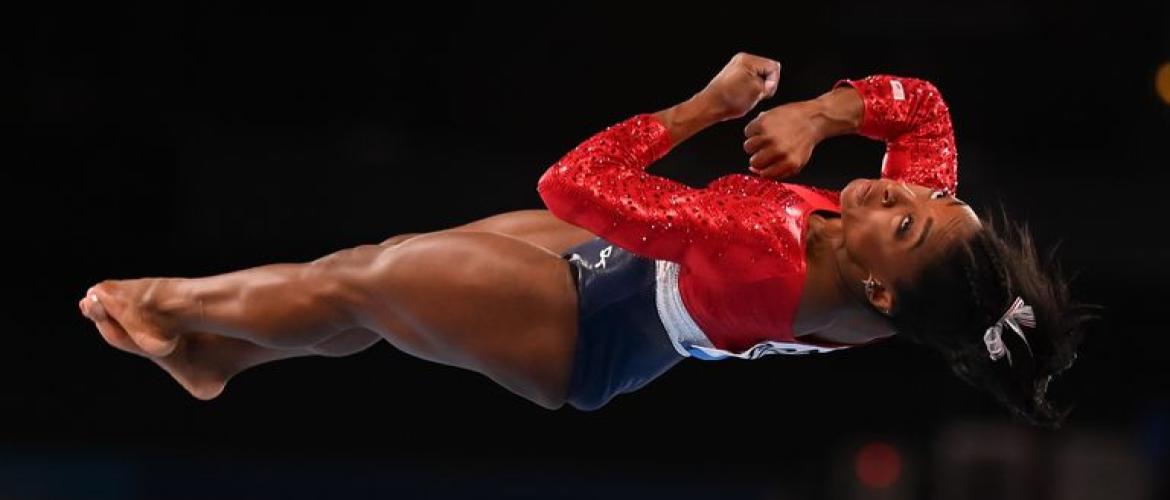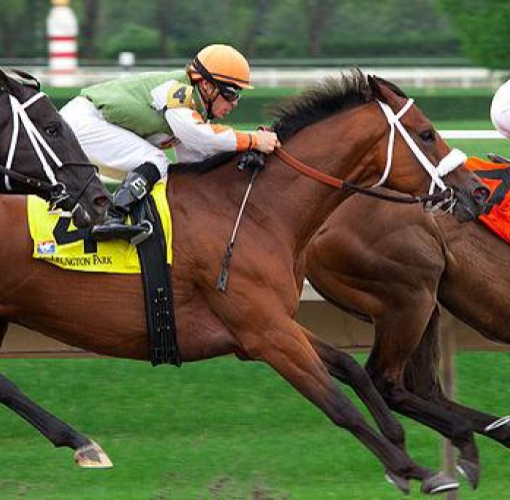What do you do when you feel a little off-kilter? For me, physical activity– a walk, a few pushups, grooving to some Motown– consistently puts my body and mind in a better state.
The benefits of activity to our physical and mental health are well studied by researchers and accepted by most of the rest of us. Movement stimulates blood flow, oxygen to the brain, natural breathing, the release of neurotransmitters, structural integrity (bones, cartilage, etc.),and muscle building and maintenance.
What people may not realize is that movement can improve learning.
Move to learn
The body and brain are constantly sending each other messages. We’re not meant to hear most of them, but hectic and overstimulated lifestyles often deny us that choice. I recently wrote about reflective practices. Let me add another potential benefit: pausing improves our ability to attend to the messages from within. Until I learned to be more mindful, I was in the unhealthy habit of working through lunch. I ignored my body’s reasonable request for nutrition on a daily basis, often not realizing until the end of the day. I was like a driver speeding past his parkway exit, unaware until miles down the road.
Brain, meet body
Human beings are one integrated unit, each part informing many others. That means when we neglect one, we can harm another. It also means when we improve one, it can help another. In that way, we could say that our entire body is involved in learning.
As a Feldenkrais practitioner, my wife Linda frequently reminds me that I can sit, stand, walk, work, and exercise in more healthy ways. Creating new habits is one of the deepest forms of learning, and mindful movement helps us disrupt maladaptive habits and open choices for more useful ones.
Curious minds wander. Sometimes our bodies want to do the same.
Research is uncovering why sitting for extended periods is harmful, with new data arising during the past two years of virtual work making that point even more clear. It’s not healthy for adults working in front of computers, and it’s even more unreasonable to expect children of any age to sit still for long.
Some key reasons for bringing movement into our classrooms is that it:
- Engages multiple areas of our brain. Activities incorporating movement improve attention and memory.
- Is a student-centered practice. Freedom to move provides an important element of control for students and encourages self expression.
- Is a foundation of our cognitive development. Our first attempts at communication and learning as babies are through physical mimicking and exploratory movement.
- Builds self awareness. Moving requires attention and makes us present and mindful of each other and our surroundings.
- Has proven social and emotional benefits. Students work better and can feel better when a lesson includes group and individual movement. (More on this in an upcoming SEL blog.)
On these points, here’s a sample of research from the last decade:
- Having the option of standing up at will while working has neurocognitive benefits (Mehta, 2015)
- Studying angles using different types of body movements increases learning (Schoval, 2011)
- MRIs verify that motor activity in the cerebellum is preceded by, and then works in tandem with, thought activity in the cortex (Jensen, 2009).
- Clinical and neuroendocrinological evidence finds that physical exercise improves vocabulary learning (Schmidt-Kassow, 2013)
- Periodic activity protects memory and thinking skills (Goldman, 2014)
- Movement while learning is an effective intervention for children with ADHD (Berwid, 2012)
- English language learners (Reig, 2009) and children on the autism spectrum (Doody, 2013) improve language acquisition with paired movements
Resistance bands
Many teachers, particularly at the elementary level, regularly incorporate movement into lessons. Such activities largely dissipate by middle school, when running around a classroom doesn’t have quite the same appeal.
Who wants to tempt disruption when children are already so easily distracted? Why invite chaos and risk student safety? Who wants students sweating in the middle of a science lab? What if everyone doesn’t want to participate? How do I manage (i.e. control) all that activity?
The benefits of change seldom happen without the risk of cost. The costs here are understanding why and learning how to get kids moving. Fortunately, even small amounts of movement provide measurable benefits, and there are countless and creative ways to do it in our classrooms.
 General tips for promoting movement during lessons:
General tips for promoting movement during lessons:
- Create structure and parameters for movement to reduce the risk of disruption. Example: Guidelines for when it’s okay to get out of your seat.
- Chunk lessons and insert movement breaks. I pause my virtual classes every 30 minutes for “DEAM” (Drop Everything And Move) time. And when I’m working at home, I set a timer to remind myself to get away periodically from my screen for a few minutes.
- Emphasize hands-on learning activities using tools, manipulatives, games, building, drawing, etc.
- Take inspiration from ASL by brainstorming how to express content physically. If you already talk with your hands, release your inner kraken. Kids pay more attention to things and people that are animated!
Pause to move
If our school schedules and staffing were more flexible, I’d have every day begin with thirty minutes of phys ed– something I recommended early in the pandemic, when virtual learning upended our rigid schedules and made that actually possible.
Even within our current structures, we can:
- Start class with movement (especially important and almost expected at the elementary level).
- All stand up to stretch, do a yoga pose, or just reach, twist and shift in our seats whenever the spirit moves us.
- Create learning stations and groups that get students changing seats a few times during the period.
- Set up two or more rows for paired work, then have everyone move over one seat for the next task or interaction (think speed dating!).
Early in my years as an elementary principal, one of my self-contained special education teachers, Mrs. Vina, asked if she could periodically take her kids outside to run around in a grassy courtyard for a couple of minutes. What a difference the activity and fresh air made to their attention during the lessons that followed!
Learn while moving
- Create opportunities for students to sit and stand frequently, like when they present a question, answer, or idea.
- Have students respond through movement or positioning. For example, clap for yes, stomp for no, or position themselves in the classroom based on where they “stand” on an issue, forming a human Likert scale.
- Partner with a cross-content colleague to mash-up active work with normally static work, like Subtraction Bowling (math + PE), Cell Model Theater (science + performing arts), and Social Graffiti (visual arts + civics).
- Early childhood teachers often get their students’ shimmying by pairing music with movement, successfully accessing two of Gardner’s intelligences– musical and kinesthetic (Palmer, 2001). (I challenge anyone to sit still during some Rob Base and DJ EZ Rock!)
Make movement the lesson
- Learn to pay attention to and follow ever more complex directions using movement, a la Simon Says.
- Use rhythms to make learning math more engaging.
- Do gallery walks to share and discuss each other’s work.
- Create your own “sign language” to associate a movement with a vocabulary word. Each student can demonstrate their word, then the class can act out a sentence or entire story together.
- A model similar to the above, called Total Physical Response, has been used for decades to teach second languages (Asher, 1966).
- Brainstorm to concoct body movements to represent concepts and content, like art terms, math functions, and scientific processes. (Right now I can picture students acting out perspective, division, or evaporation!)
- Make coding/algorithms visible and experiential, like using the grid of tiles on your classroom floor and a student as a programmable robot.
As with all unfamiliar strategies, start slow and be prepared to adapt to each situation and your class needs. Be sure initial movements are not too much for them (and you) in terms of duration, vigor, and sensory stimulation level. Once you and your students get used to movement in class, you can be proactive, and not wait until they look fidgety or disengaged to intervene. If nothing else, movement activities add new tools to your kit, help break lessons into manageable chunks, and– dare we say it?– add fun and wellness to our and our students’ day.
Now, get a move on!
⚙ Dr. Marc
April 2022
If you believe that someone in your professional or personal network would benefit from reading and engaging in topics like this, please forward them this email. I only ever use email contacts to provide information such as this post, and will never share contacts with any other person or organization. To unsubscribe, reply with “Unsubscribe” as your subject line.
©2022 Marc Natanagara, Ed.D. All rights reserved. Reprinted with permission.
Articles, services, and other resources accessible at authenticlearningllc.com
When duplicating this post in any form, please be sure to include the attribution in italics above.
When duplicating an infographic, be sure to include any attributions within the graphic.
Image Credits
Image of Simone Biles from XINHUA NEWS AGENCY GETTY IMAGES https://www.prevention.com/health/a37179324/simone-biles-twisties-olympics-instagram/
ASL Poster image from https://www.ai-media.tv/ai-media-blog/sign-language-alphabets-from-around-the-world
References
Asher, J.A. (February, 1966). The learning strategy of total physical response: A review. The Modern Language Journal 50(2), 79-84. [Download PDF]
Basso, J.C., Shang, A., Elman, M., Karmouta, R., & Suzuki, W.A. (2015). Acute exercise improves prefrontal cortex but not hippocampal function in healthy adults. Journal of the International Neuropsychological Society 21, 791–801. [Download PDF]
Berwid, O.G., & Halperin, J.M. (October, 2012). Emerging support for a role of exercise in attention-deficit/ hyperactivity disorder intervention planning. Curr Psychiatry Rep 14(5), 543–551.
Doody, K.R., & Mertz, J. (2013). Preferred play activities of children with autism spectrum disorder in naturalistic settings. North American Journal of Medicine and Science. [via Science Daily]
Goldman, H. (April 9, 2014). Regular exercise changes the brain to improve memory, thinking skills. Harvard Health Publishing, Harvard Medical School. [Harvard Health]
Jensen, E. (2009). Teaching with the brain in mind. Alexandria, VA: Association for Supervision and Curriculum Development.
Mehta, R. K., Ashley E. Shortz, Mark E. Benden (2015). Standing up for learning: A pilot investigation on the neurocognitive benefits of stand-biased school desks. International Journal of Environmental Research and Public Health 13: 1-10. [Google Scholar]
Palmer, Hap (September, 2001). The music, movement, and learning connection. Young Children, 56(5), 13-17. [Palmer link]
Rieg, S. A., & Paquette, K. R. (2009). Using drama and movement to enhance English language learners’ literacy development. Journal of Instructional Psychology, 36(2), 148+.
Schmidt-Kassow, M., Deusser, M., Theil, C., Otterbein, S., Montag, C., Reuter, M., Banzer, W., & Kaiser, J. (May 20, 2013). Physical exercise during encoding improves vocabulary learning. PLoS One 8(5): e64172. [NIH link]
Schoval, E. (2011). Using mindful movement in cooperative learning while learning about angles. Instructional Science 39, 453-466. [Springer link]





